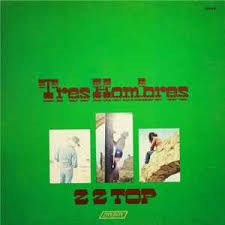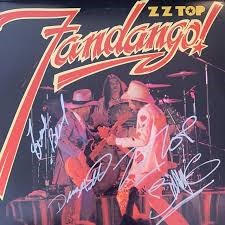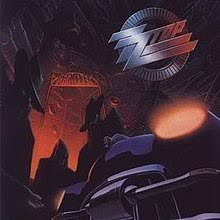Five of the best from ZZ Top
Five of the best from ZZ Top
- Eliminator (1983) - Sales: Over 10 million copies sold worldwide (Diamond certification in the U.S.). Notable Tracks: "Gimme All Your Lovin'," "Sharp Dressed Man," "Legs". Impact: This album catapulted ZZ Top to international fame, blending their blues-rock roots with synthesizers, creating a unique sound resonating with rock and MTV audiences.
- Tres Hombres (1973) - Sales: Certified Platinum in the U.S. Notable Tracks: "La Grange," "Jesus Just Left Chicago". Impact: Considered a classic, Tres Hombres was ZZ Top's breakthrough album and solidified their sound. "La Grange" became one of their most iconic songs.
- Afterburner (1985) - Sales: Over 5 million copies sold worldwide (Certified 5x Platinum in the U.S.). Notable Tracks: "Sleeping Bag," "Stages," "Velcro Fly". Impact: Following the success of Eliminator, Afterburner continued ZZ Top's move into a more electronic, synth-heavy sound while maintaining commercial success.
- Fandango! (1975) - Sales: Certified 2x Platinum in the U.S. Notable Tracks: "Tush," "Heard It on the X". Impact: This half-live, half-studio album showcased their dynamic range, with “Tush” becoming one of their most recognizable songs.
- Recycler (1990) - Sales: Certified Platinum in the U.S. Notable Tracks: "Doubleback," "Concrete and Steel". Impact: While it wasn't as commercially massive as Eliminator or Afterburner, it maintained their momentum into the 1990s and featured "Doubleback," which was used in Back to the Future Part III.
1. Eliminator (1983)

ZZ Top released Eliminator in 1983, marking a major turning point in both their career and rock music. The album combined blues-rock roots with new wave influences, creating a fresh, modern sound. Catchy guitar riffs and synthesizer hooks gave it mass appeal, leading to over 10 million global sales.
Unlike earlier albums, Eliminator introduced a more polished production style that connected with a wider audience. As a result, it launched several hit singles that helped define the 1980s rock scene. Tracks such as "Gimme All Your Lovin’" and "Legs" earned constant airplay on MTV, raising the band’s visual profile significantly.
In addition to commercial success, Eliminator expanded ZZ Top's fan base and reinforced their position in music history. The band adapted to the video-driven era without losing their identity. This move not only boosted album sales but also inspired other artists to follow suit.
The album’s fusion of tradition and technology kept it relevant across generations. While earlier fans welcomed the evolution, newer listeners embraced the updated sound. ZZ Top didn’t abandon their roots—instead, they built on them with confidence and creativity.
Today, fans still view Eliminator as a defining work in ZZ Top’s catalogue. It stands as proof of their ability to innovate while maintaining a strong musical identity. Even decades later, its influence remains clear in rock’s continued evolution.
2. Tres Hombres (1973)

ZZ Top released Tres Hombres in 1973, which became their breakthrough album and a cornerstone of their blues-rock identity. The record captured the band’s raw sound, fusing Texas boogie with gritty rock elements. As a result, it connected with fans of both classic rock and Southern blues.
Unlike earlier releases, Tres Hombres brought national attention and chart success. Strong riffs, punchy rhythms, and vivid storytelling helped define the album’s appeal. Its production, while simple, gave each track a live, energetic feel that resonated with audiences.
Moreover, the album introduced new listeners to ZZ Top’s unique musical style. Songs from the album quickly became staples of rock radio, expanding the band’s reach. With consistent touring and radio play, they turned this record into a long-term fan favorite.
The success of Tres Hombres laid the groundwork for the band's future growth. It helped ZZ Top earn a lasting place in American rock history. Fans still return to it for its honest sound, sharp guitar work, and unmistakable energy.
Even today, the album holds its status as a key release in the blues-rock genre. Through this record, ZZ Top proved they could blend authenticity with mass appeal. It stands as one of the defining albums of the 1970s rock era.
3. Afterburner (1985)

ZZ Top released Afterburner in 1985, building on the commercial success of their previous album Eliminator. This time, they leaned further into synthesizers and polished production, blending blues-rock with a futuristic edge. That shift helped the band connect with the MTV generation and reach a broader audience.
Unlike their earlier, grittier records, Afterburner embraced a sleeker, more radio-friendly sound. Catchy choruses and electronic textures gave the songs a modern appeal that matched mid-1980s trends. As a result, the album earned strong sales and multiple hit singles.
Tracks from Afterburner received heavy rotation on both rock radio and music television. This visibility expanded ZZ Top's fan base across new markets, especially younger listeners. Though longtime fans noticed the shift, many still welcomed the band’s evolving style.
Afterburner proved that ZZ Top could innovate without losing their core identity. They stayed creative while keeping their blues roots in the mix. That balance made the album both commercially and culturally successful.
Even decades later, fans still recognize Afterburner for its energy, catchy production, and place in rock history. It showed that ZZ Top understood the importance of adapting while preserving what made their sound unique. This album remains a key part of their legacy.
4. Fandango! (1975)

ZZ Top released Fandango! in 1975, delivering a mix of live recordings and studio tracks that showcased their versatility. The album’s first half captured the raw energy of their stage performances, while the second featured new material with tight, blues-driven production. This structure set Fandango! apart from standard studio releases.
Unlike many live albums, the opening tracks didn’t just document performances—they highlighted ZZ Top’s power as a live act. Audience reactions and sharp guitar solos gave listeners an authentic concert feel. Meanwhile, the studio side reinforced their strength in songwriting and arrangement.
The band used Fandango! to bridge the gap between the road and the studio. This combination gave fans a complete picture of their musical identity. The release of the hit single "Tush" helped the album gain commercial momentum and attract new listeners.
While short in total length, the album delivered lasting impact. Fans praised its balance of spontaneity and precision. Over time, Fandango! earned recognition as a defining release in ZZ Top’s discography.
Even now, the album continues to receive attention for its unique format and strong tracks. ZZ Top proved they could thrive in both live and studio settings, strengthening their reputation across the rock world. This album helped solidify their status during a key moment in their career.
5. Recycler (1990)

ZZ Top released Recycler in 1990, completing a trilogy of albums that explored synth-driven rock without abandoning their blues roots. The band continued using layered production and digital effects while maintaining signature guitar riffs. This combination helped the album appeal to fans of both modern and classic rock.
Compared to Eliminator and Afterburner, Recycler leaned slightly back toward a rawer sound. While synthesizers remained, ZZ Top reintroduced a grittier tone that echoed their earlier work. This shift pleased longtime fans while still offering enough polish for newer audiences.
Singles from Recycler received strong airplay and featured in popular films, increasing the album’s exposure. Though it didn’t reach the same sales heights as its predecessors, it sustained the band’s momentum into the 1990s. Touring and music videos kept ZZ Top visible during a rapidly changing music landscape.
The album showed their ability to balance commercial appeal with musical integrity. Instead of chasing trends, they refined their formula.
Even years later, Recycler remains part of ZZ Top’s enduring legacy. It represents a confident close to their successful 1980s run and a bridge to their later material. Fans continue to revisit the album for its punchy sound and consistent quality.
Recent Posts
Queen studio albums: A Review
Phil Collins Albums Ranked & Reviewed – Complete Guide to Every Studio Album
The best of Massive Attack
Let’s Make Magic
Book Your Event DJ Now




